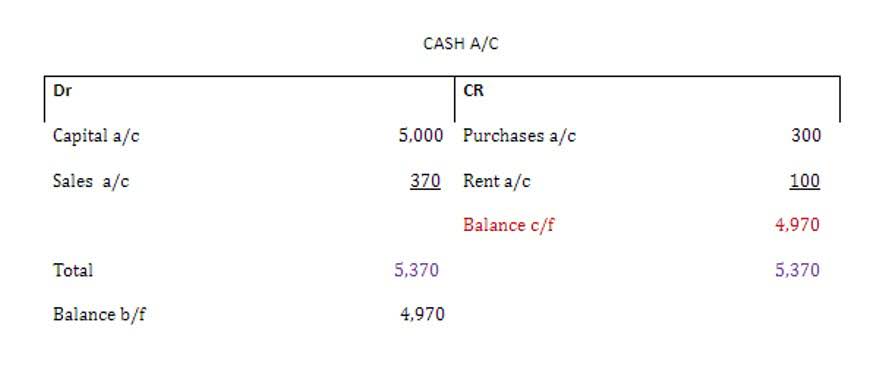
If the anticipated useful lifetime of the patent is even shorter, use the useful life for amortization functions. In general the patent cost amortization expense is calculated using the following formula. ASPE provides similar guidance, emphasizing that the amortization method should reflect the pattern of benefits.

How to record amortization expenses
Table of Contents
- Any costs not recovered by the end of the tenth year are deducted in that year.
- Intangible assets, particularly patent rights have a limited duration for the owner to claim rights.
- One difference between amortization and depreciation is that intangible assets don’t have a useful life in the sense that they become unusable or become obsolete.
- If the copyright is internally developed, capitalizable costs include expenses such as legal and application fees.
- Another approach is the income-based method, which estimates the future cash flows that the patent is expected to generate and then discounts these cash flows to their present value.
- The value of the patent will also depend on the intensity of the problem it solves.
Understanding the patent fees deductible expectations can help you make a smart strategy for your annual tax return. The net book value of the capitalized patent cost will form part of long term assets (line 24) shown in the balance sheet. Amortization of intangible assets is a fundamental aspect of intermediate accounting, gym bookkeeping requiring a thorough understanding of the principles, methods, and regulatory requirements. By mastering these concepts, you will be well-prepared for your Canadian accounting exams and equipped to handle real-world accounting challenges. Goodwill arises when a company acquires another company for more than the fair value of its net identifiable assets.
Accounts Receivable Solutions
A company that handles its patent amortization well can gain deeper insights into its financial health. This isn’t about making the numbers look good for the next quarter—it’s about understanding the long-term impact of today’s decisions on tomorrow’s profits. Once our amortization schedule is filled out, we can link directly back to our intangible assets roll-forward.
Ready to Experience the Future of Finance?

So to find an amortization expense, simply divide the asset’s value by its lifespan. Before learning how to account for intangible assets, you need to understand what intangible assets are. Corporations should purchase patents from different firms for current innovations or through federal authorities for brand-new innovations. The price of a current patent is the quantity the corporation paid for the patent. The price of a patent for a brand-new invention contains the registration, legal charges, and documentation charges. Corporations amortize a patent utilizing its useful life, although a patent is legally valid for 17 years.
- In short, the double-declining method can be more complex compared with a straight-line method, but it can be a good way to lower profitability and, as a result, defer taxes.
- For instance, if R sells the stock for $35,000, she would report a $5,000 gain ($35,000 – $30,000).
- Amortization is the process of expensing the cost of an intangible asset over its useful life.
- Explore the essentials of ASC , focusing on the accounting and management of intangible assets.
- For instance, consider that your invention’s patent can be protected for 10 years, which begins when the patent was first granted.
- Therefore, public companies must adhere to the matching principle in accounting by recording the entire expense on the income statement.
The Year in Review: Biggest Changes in Tax Regulation
If the software costs $10,000 and has a 5-year life, the annual amortization is $2,000. When you sue someone else for an IP-related cause of action and receive damages in victory or get paid via settlement, tax treatment depends on the exact nature of the lawsuit. If the cause of action was for the infringement of business IP, the proceeds could have been treated as long-term capital gain if the lawsuit were structured properly.
and Reporting
- That’s why the IRS is generous in the latitude it grants for tax treatment of patent expenses.
- According to the rules set by the Generally Accepted Accounting Principles (GAAP), companies must account for this gradual loss in value.
- For example, a straightforward utility patent application might cost between $5,000 and $10,000 in legal fees, while more complex cases can exceed $15,000.
- COMPANIES SHOULD ALWAYS CONSIDER HOW A CHANGE in an asset’s useful life relates to its value and vice versa.
For instance, if a new technology renders a patented invention obsolete, the remaining unamortized cost may need to be expensed immediately. This ensures that the financial statements remain relevant and reflective of the current economic realities. Explore the systematic allocation of the cost of intangible assets over their useful lives, covering Canadian accounting standards, practical examples, and exam preparation tips. HighRadius offers a cloud-based Record to Report Suite that helps accounting professionals streamline and automate the financial close process for businesses. We have helped accounting teams from around the globe https://sertelectronic.com/contra-accounts-definition/ with month-end closing, reconciliations, journal entry management, intercompany accounting, and financial reporting.

Adjustments may be made to account for obsolescence or technological advancements that could impact the patent’s utility. The cost of any purchased patents patent amortization can be included in the cash flow statement under the heading of amount paid for long-term assets (line 51). Any amount not being capitalized should be included in the income statement under operating expenses as incurred.

Treatment of Capitalized Costs of Intangible Assets (Part I)
Recall the concept of income tax basis discussed above – once this basis has been established for patents or copyrights, you can take an amortization deduction based on a 15-year useful life. When you take the amortization deduction each year, income tax basis for the corresponding asset is reduced accordingly. This journal entry for patent will increase the total intangible assets on the balance sheet by $50,000 as of January 01.
